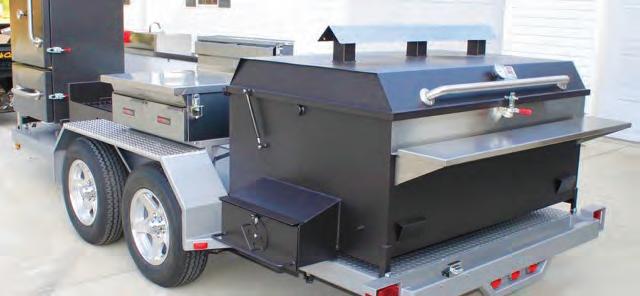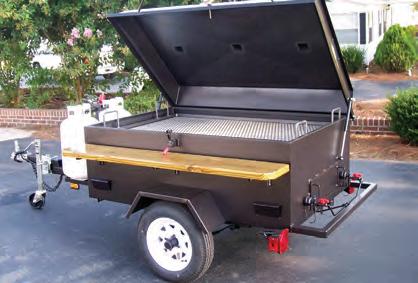















































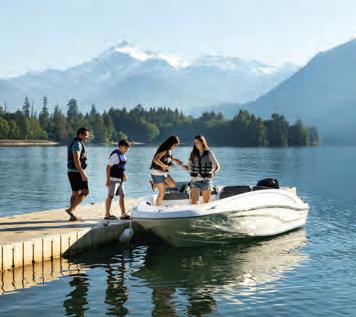





Embarking on the open water is an exhilarating experience, flled with the promise of adventure and relaxation. Whether you’re a seasoned sailor or a weekend cruiser, safeguarding your vessel with proper insurance is not just a choice—it’s a necessity. Explore the reasons why every boat owner should prioritize boat insurance for a worry-free voyage.
The open water can be unpredictable, with unexpected storms, collisions, or other potential accidents. Boat insurance can give you fnancial protection if there is damage to your vessel, providing coverage for repairs or replacement.
Accidents on the water can result in damage to other boats, docks, or even injuries to passengers. Boat insurance offers liability coverage, which can pay for damages or injuries you’re liable for while boating, up to specifed limits, and lawsuit costs if you’re sued. This includes damage you cause to another watercraft or if someone on or near your boat is injured and you’re found to be legally responsible.
Unfortunately, boat theft and vandalism are realities that boat owners face. Boat insurance has comprehensive and collision coverage that can protect you against events outside of your control, including theft and vandalism.
Accidents on the water may lead to injuries for you or your passengers. Boat insurance offers a range of optional medical payments coverage limits, helping to cover medical expenses if you are in an accident or someone is hurt on your boat, regardless of fault.
If you fnanced the purchase of your boat, most lenders require insurance coverage to protect their investment. Having boat insurance not only fulflls these requirements but also gives you peace of mind knowing that your fnancial interests are safeguarded.


Some water municipalities and marinas may require proof of insurance for docking or accessing certain areas. Boat insurance allows you the fexibility to explore different destinations without worrying about entry restrictions.
Emergency towing and assistance
Progressive boat insurance can include optional Sign & Glide® On-Water Towing coverage. If your boat is disabled or breaks down on the water, Sign & Glide® pays for on-water towing, jump starts, soft un-groundings, and fuel delivery.
Wreckage removal
If your boat sinks, Progressive boat insurance will cover the cost of removing your boat from the water (if removal is legally required).
Investing in boat insurance is not just about protecting a valuable asset; it’s about safeguarding the memories, experiences, and joy that come with your on-water adventures. Don’t let unforeseen circumstances disrupt your journey—navigate with confdence, knowing that Progressive boat insurance has you covered. Ensure a smooth and worry-free voyage, because when it comes to your boat, peace of mind is the ultimate luxury.
Scan to get a quote in as little as 4 minutes
learn more.




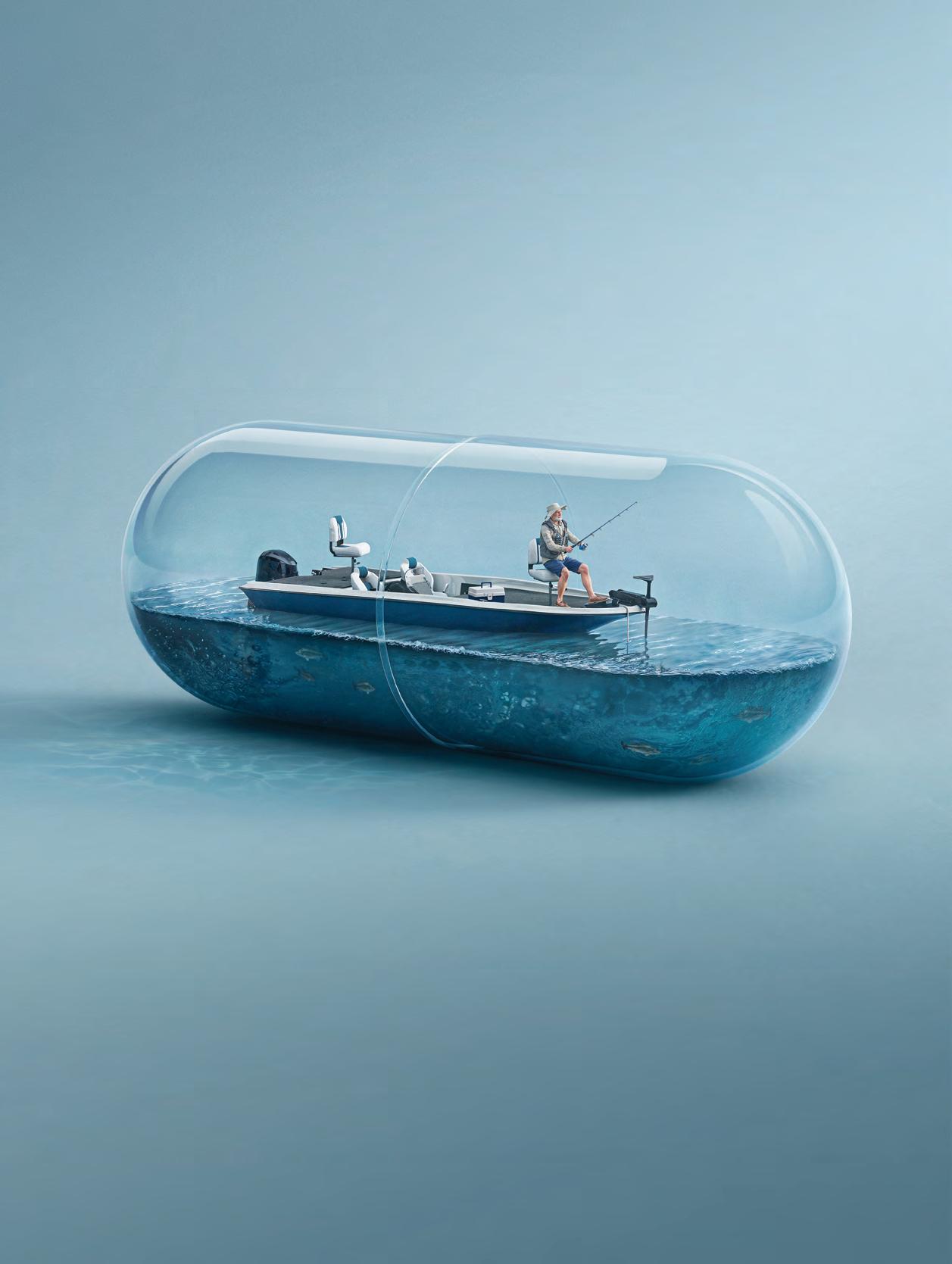


















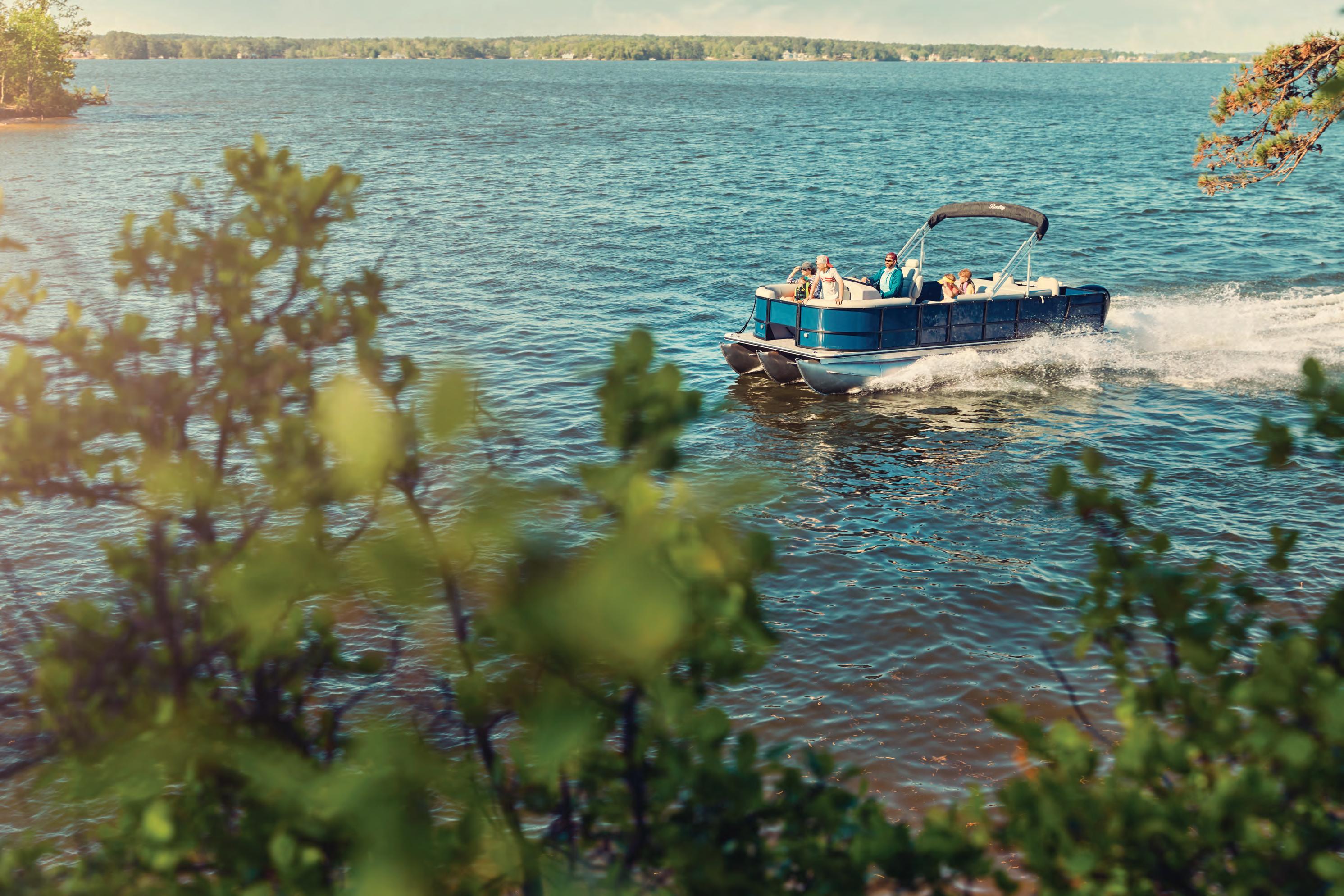
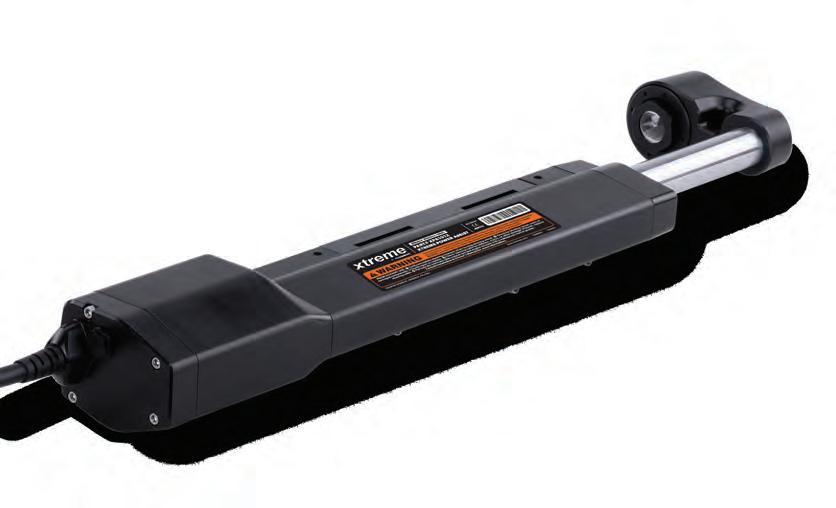

The rewards of a catch made while sight fshing go well beyond the satisfaction of landing the fsh. Take every opportunity to observe fsh in their natural habitat. To maximize success, an angler should take in as much information while on the water as possible.
By Capt. John Luck
Regardless of your target species, tackle of choice, or home waters, actually seeing the fsh is not only highly enjoyable but one of the best learning experiences an angler can have. It leads to a detailed understanding of fsh behavior.
Te sight fshing angler gets to see fsh react to everything around them, from the lure, bait, or fy presented to them, to the actual structure of the waterbody they live in. Recognizing their cues of interest or disinterest becomes applicable for species in both fresh and saltwater. Obviously remaining as quiet as possible, making sure that you have a good vantage point and during daylight hours having a good pair of sunglasses are all vital to your success. My personal favorite is the Bajio Tech Angler Collection due to their ultra clear polarized lens.
Sight fshing enables an angler to have more control over the outcome and allows you to adjust your bait and techniques to ensure a strike.
Sight fshing isn’t just about catching fsh; it’s about understanding their behavior, engaging with the process, and enjoying the thrill of spotting your target underwater. So next time you’re out on the water, keep your eyes peeled—you might just discover a whole new dimension to your angling.
I hope you fnd this article informative! If you have any other requests or questions, feel free to ask. Tight lines.
Contact Capt. John Luck at luckydogman@msn.com.
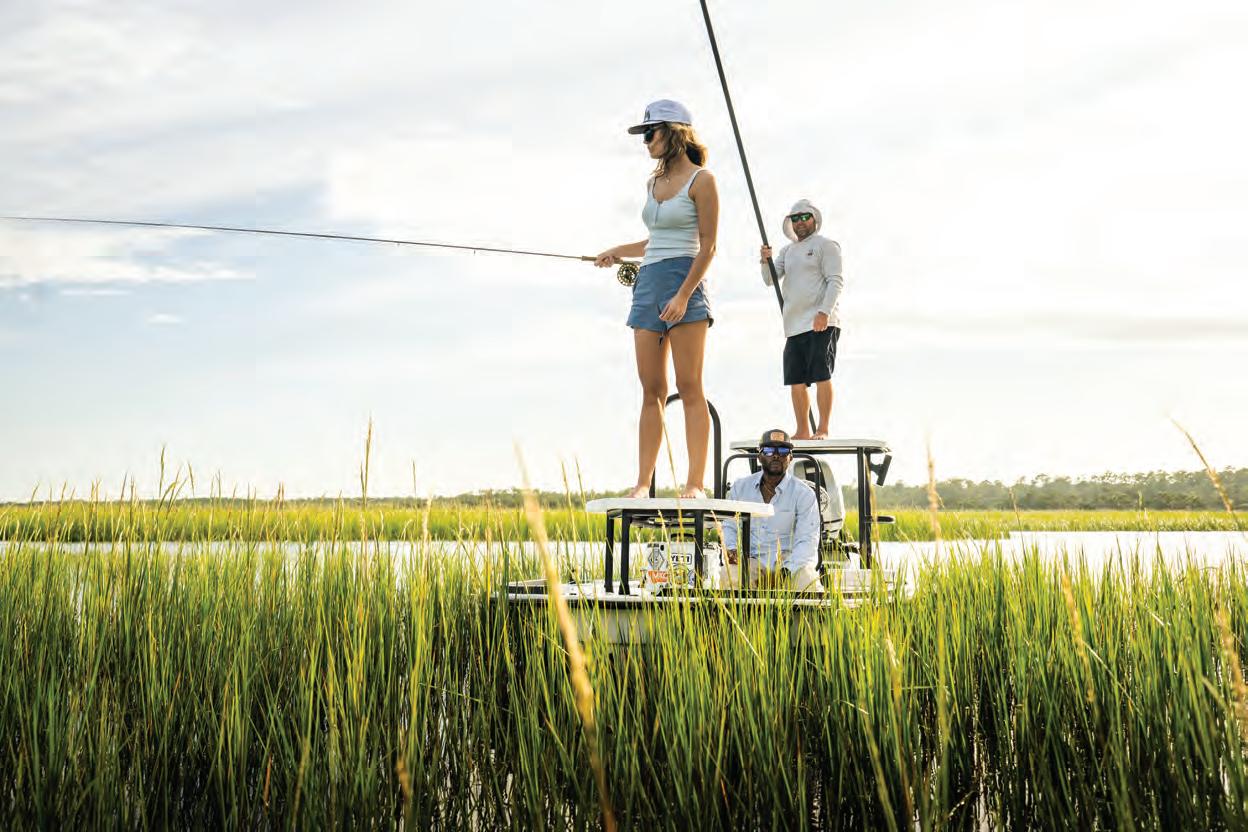



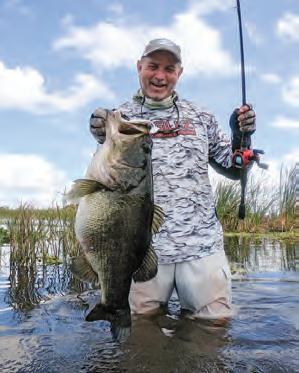




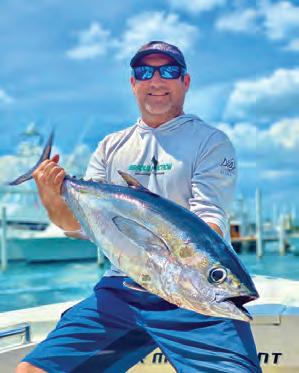

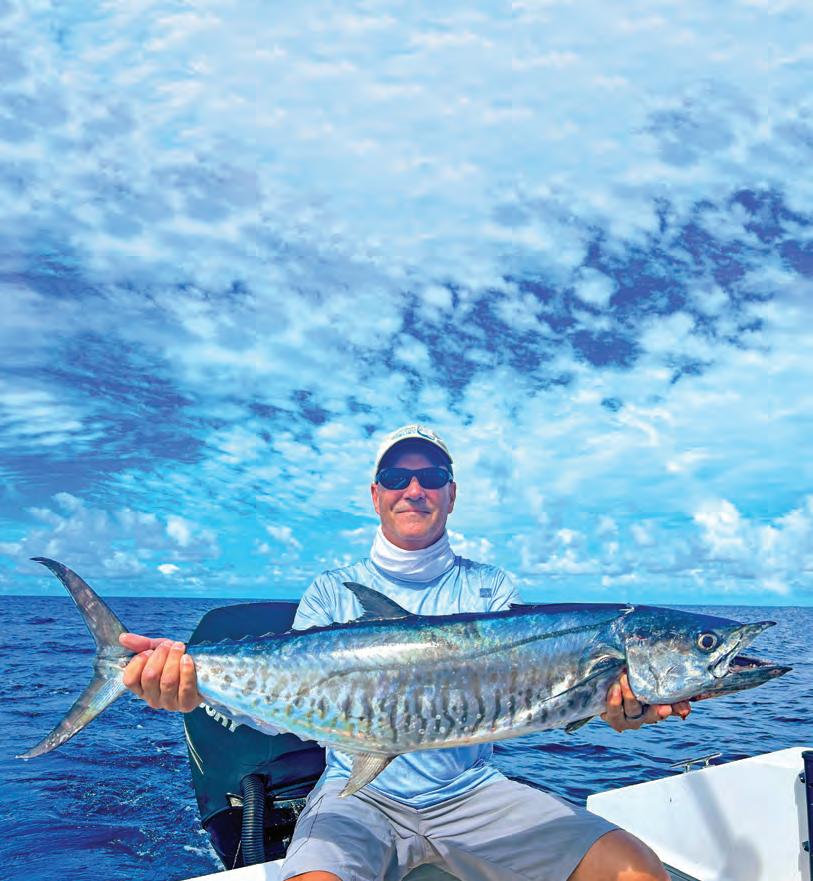
It seems the farther south you go, the tougher the fsh get. Tis holds true in the South Pacifc. If you’re looking to go head-to-head and toe-to-fn with some of the toughest fsh out there, Fiji is a great bet.
Tese fsh are aggressive, fast and strong, and with a fortress built of line-cutting sharp edges, the fsh start with the advantage. Tis is a great place to target giant trevally (GT). Although it is still far away, Fiji is a great alternative to the Seychelles, and it is a destination that ofers amenities for anglers as well as their non-fshing companions. I fshed out of Savusavu, a large remote island that requires an additional hour-long fight on a small plane from the international airport on the main Island. Te remoteness means less fshing pressure, but the island still ofers luxury accommodations. As fshy as Fiji is, it doesn’t get much fshing tourism. It’s a diving and resort destination that happens to ofer amazing fshing. Summers feature a great yellowfn tuna and GT bite, and winters hold marlin and wahoo. I was there during a transitional phase into winter (seasons are reversed there), and there were plenty of resident fsh to target including GT, which is what I was afer. Immersion Fiji is the most experienced guide on the island, and Michael can handle anything from topwater for GT to massive yellowfn and even spearfshing or a cool waterfall getaway.
Te GTs are unquestionably an apex predator and the top quarry. Tese are very aggressive, strong and smart fsh that you need to be battle ready for. My weapon consisted of heavy spinning gear with 100-lb. braid, 150-lb. leader and 350-lb. terminal tackle. When a GT explodes on a 7-inch popper, there is no question that it’s game on. It’s like a bowling ball being dropped from a third-foor window, followed by hooking your line to a semi truck. With drags set at 20 pounds, the fght is as much on the fsh as it is on you. Any less drag would result in countless breakofs in the reef. Te fght will tax your strength, and be prepared for some heartbreaks. Tere is no doubt that topwater fshing for these guys exceeds the hype.
Another fsh that will blast your popper is a Pacifc Spanish mackerel, also known to the locals as walu. Similar looking to our kingfsh, this is one of Fiji’s most prized table fare. It’s much whiter, fakier meat than our mackerel and is a staple in Fiji’s national dish Kokoda (pronounced ko-con-da), which is a ceviche with fresh coconut cream. Tey ofen blow a plug completely out of the water, and they also hit deep trolling plugs, which makes for a nice break
By Will Schmidt
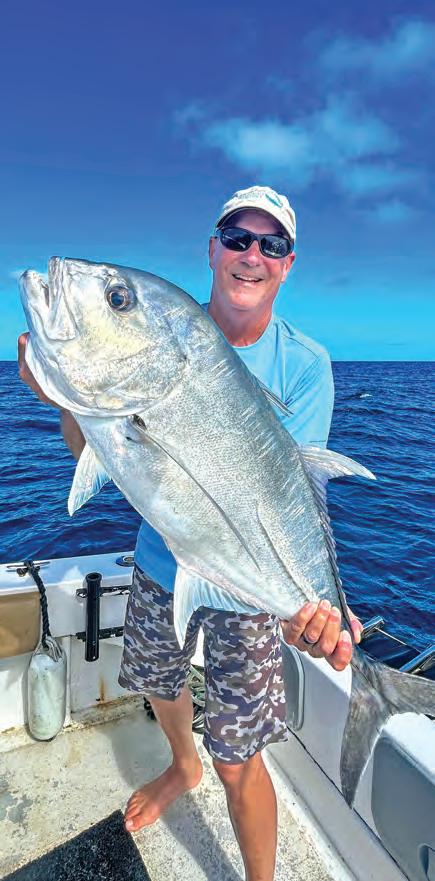

from casting. Long strong runs and crazy aerial attacks make this another great fsh to come across as you search for GTs.
You can also downsize to a foating stick bait for additional topwater action. Smaller, yet aggressive and strong fsh like red bass, bluefn trevally, emperor fsh and other reef dwellers provide plenty of exciting action on the surface.
If giant trevally are on your hit list, Fiji is an amazing destination that fully delivers. Te locals could not be more inviting and friendly, the water is unbelievably clear, and the islands are as peaceful as they are beautiful. It’s truly a trip of a lifetime.
Will Schmidt is a seasoned tournament angler who has been writing about fshing for three decades. For information about fshing Fiji, contact Immersionfji.com.
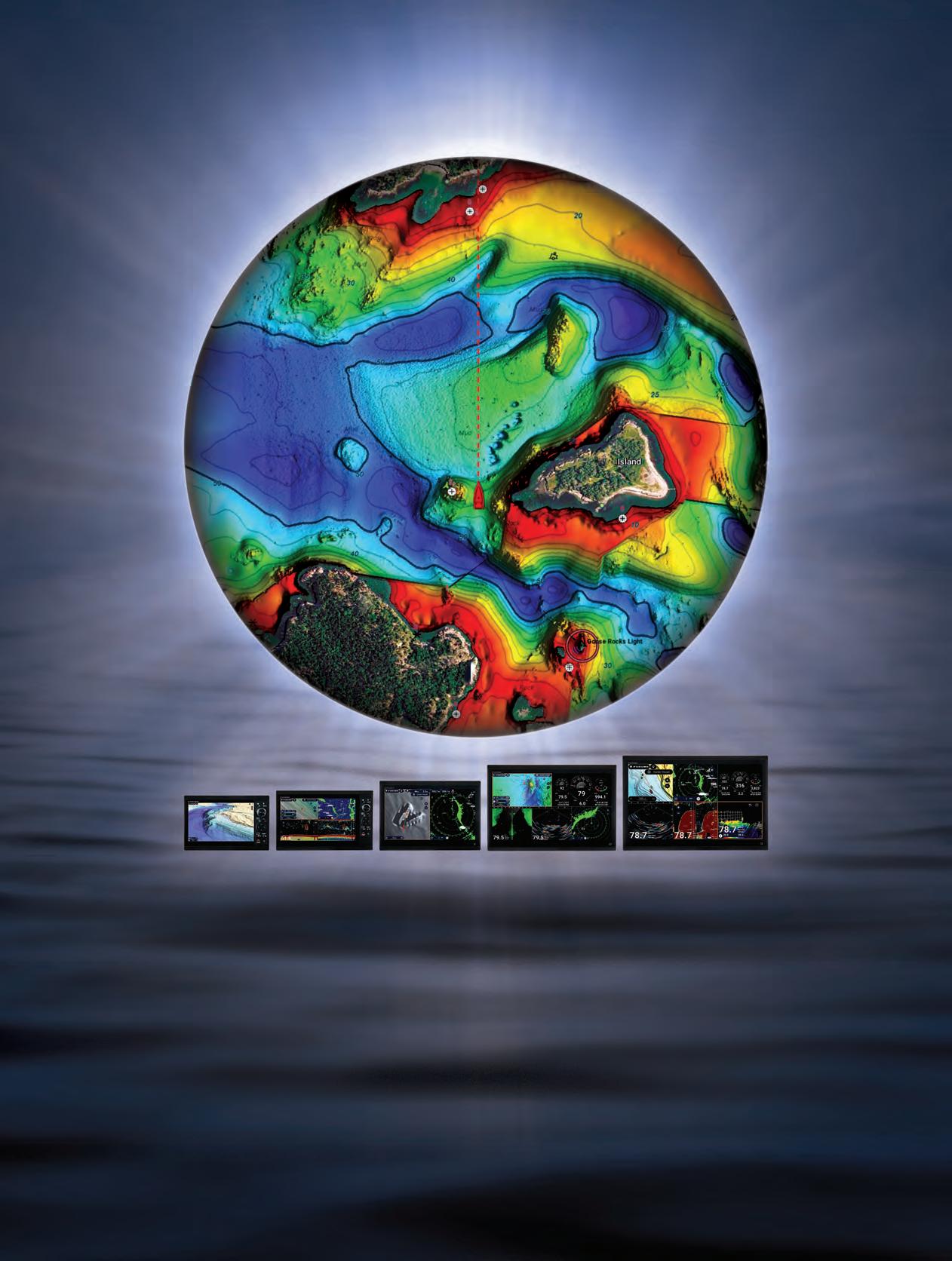


You want new charts?
You got new charts! Explore the ocean with vibrant terrain & depth shading, using all-new TZ MAPS. Don’t just take our word for it. See for yourself. Scan here, and we’ll show you!
THATCH MAGUIRE, EDITOR AT LARGE
Snook are a great inshore/near shore species to target. Teir predator style bite and their world class fght make them truly worthy of the gamefsh title, but catching a snook or targeting snook can be challenging. While there are countless fsheries that hold snook, narrowing down the best area is not an easy call. Given that snook season opens on Florida’s east coast September 1st here are a few tips that will pay of in planning a successful snook fshing trip; one that nearly ensures your success.
First and foremost, where are you most likely to catch snook? Tat’s not a trick question. It’s the frst question you should answer before planning your snook fshing expedition. My snook fshing eforts have led me to believe that the Jupiter Inlet on Florida’s East Coast is the most reliable estuary for easily accessible snook for beginners. My catch ratio over the many years that I have fshed the Jupiter Fla. Inlet suggests that the primary species in and around this pristine inlet is snook. Day in day out, if you catch a fsh in the Jupiter Inlet it will more than likely be a snook.
Te next important question for a successful trip is what to use as a bait or lure? For the most predictable success I strongly recommend live bait. Te bigger the better. Pilchards are my number one live bait, but croakers and pinfsh work well too. Keeping your live bait lively

and healthy is a chapter in itself. Changing your water regularly and adding aeration are key essentials to prolonging your bait’s life. Tere’s nothing worse than getting on top of the bite and discovering your bait is dead. We’ve all done it, but don’t let it happen to you.
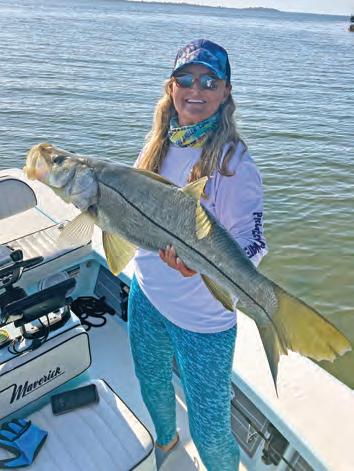
Next on the check list is tackle. You’ll want to scrap the light tackle approach for Jupiter Inlet snook. Medium to heavy or you’ll invariably lose the big ones. I recommend a 20-pound braid with at least a 40-pound leader. Circle hooks are a good consideration if you’re experienced in using them. Nothing less than a #4. You better have a heavy-duty landing net too because some of these monsters just won’t ft into some of the more modest nets. Te next important question is the easiest to answer. Where in the Jupiter Inlet do I fsh for snook with predictable results? Answer- just about anywhere! Obviously, docks are a great hiding place for snook, and night fshing will normally produce the best results around docks with lights or shadow lines. Flip a big pilchard under a dock light in Jupiter Inlet and watch what happens. You’re about to be tested because you’ve got to horse them away from the pilings or you’ll be kicking yourself for days. Tis is where the braid comes in handy. It’ll allow you to win that battle more ofen than not. But everybody loses that battle from time to time. Seawalls are also a good source for targeting snook. Tey’re cruising the seawalls constantly so just be patient and let your live bait do all the work.
You can use live shrimp if that’s all you can get, but your species catch will not be predominantly snook. You’ll catch a fair amount of junk fsh in Jupiter with live shrimp. I personally don’t want to confuse the efort with all that inferior action, and you don’t have to travel to Jupiter for that catch.


By Jeff Durniak | Unicoi Outfitters
Fishing is a great sport and attracts anglers from diverse backgrounds. A “quality” day on the water has different definitions for different anglers. But we all have one thing in common: we hop aboard a spoke on the angler cycle and take a ride. Let’s go!
Most of us start on that first, low spoke of “I wanna catch a fish.” We often start in diapers, tossing a doughball at a school of bream or a freshly stocked trout. We rejoice in our first-ever fish to hand; it’s a trophy in our eyes! Soon we step up to the next spoke. Let’s call that one, “I want to catch a lot of fish.” With experience, we perfect our techniques and tackle, whether bait or lure. We’re no longer satisfied with a fish or two and our new definition of “quality” is a full limit, or even more fish that are released.
After a while, we’re no longer content with abundant catches and step up to the next stage: “I want to catch a big fish.” The trophy hunter begins their journey. Specialized tackle, big baits, intense research, and targeted times may result in a whopper to the net. Now that’s a “quality” trip! But we soon tire of just one memorable fish and jump to the next spoke: “I want to catch a lot of big fish.” Dedication to the sport results in true experts, anglers who consistently land high numbers of trophy bass, trout and stripers. Our “quality” is now measured in total pounds. As time passes, that challenge subsides, and those experts advance to the next stage: “I want to make it harder.” They yearn to master new techniques that hinder their efficiency but make the pursuit more “sporty.”. A classic example is flyfishing, enticing the fish with feathers instead of bait. “Quality” is defined by outwitting the fish with
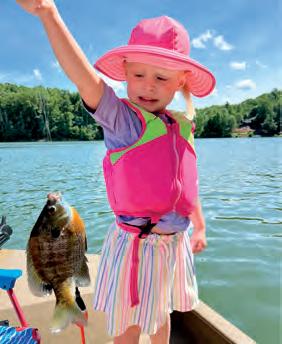
these harder methods. Anglers at this stage are highly experienced and many eventually find greater joy on the next spoke. Let’s call it “happy to be here.”
We simply appreciate our time in nature with clean air, clear water, and rich vegetation. More time is spent with a camera than a fishing rod. “Quality” is now defined by the overall experience afield.
An aged angler will often step up to the next stage, “benevolence.” They set aside their own rod and help a new angler catch their first fish. A “quality” day is now measured in the number of smiles on their guests, not the number of fish they land themselves. Finally, some of us might live long enough to complete the angler cycle. We return to our start: aiming a spin cast rig and a doughball of bait toward pond breamnext to our nursing home.
That’s the angler cycle. May each of us respect the spokes that our fellow anglers occupy. “Quality,” after all, is defined by each angler, not by their peers. There are enough spokes on this angler cycle to accommodate us all!







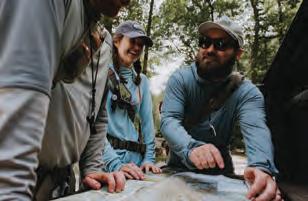






Contributed by David Hulsey
International Federation of Fly Fishers - Master Certified Casting Instructor http://www.hulseyflyfishing.com | 770-639-4001
September in the south is the breaking point from the oppressive heat and humidity of summer. By the third week or so, nighttime temperatures usually drop down into the fifties and save our wild trout populations one more time. More flexibility in fishing some lower elevation streams is realized and the trout are happy and willing. There are few hatches to be had so terrestrials still rule for the surface feeders. Cooler temps get the fish looking for a larger mouthful too, so streamers are on the line more often as well. Low water levels are typical in September so finding and sight fishing larger fish can work to your advantage. Pressure from other fisherfolk starts to diminish after Labor Day and the
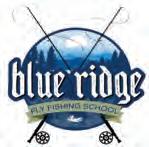
beginning of the archery deer season. Fish loosen up a little bit and are more forgiving on fly selection and less than perfect presentations. It’s just a good time to be on the water. For us fly fishers this is the welcome beginning of the fishing season with delayed harvest seasons in Georgia, North Carolina, and Tennessee on the way in a month or two. Largemouth and Spots are putting on the feed bag and schooling up on shad and blue backs in our area lakes. Wolf packs chasing bait is what makes the world go around for fly fishers and conventional tackle fishers on the reservoirs in the mountains. Be sure to get out at the first sign of those cool north breezes and celebrate the coming of fall by catching a fish or two!


Contributed By:
Chris Scalley
River Through Atlanta Guide Service
The fishing gene? Some people get into fishing later in life as adults but luckily for me my grandfather on my mom’s side was an avid small mouth bass angler from New York. During one summer when I was 12years old my parents dropped me at the Atlanta airport flight headed for Albany NY where I met my grandparents to spend two weeks fishing with my grampa. Those fond memories catching bronze backs on surface plugs among the Lilly pads and checking our night lines in the mornings for bullheads with fried catfish for breakfast. I am fortunate in that my kids get full exposure to the outdoors. Usually, we will fish where I work and guide on the Chattahoochee. I have 13year old Twins Gracie and John. As I mentioned everyone has a different journey in how they discover fishing, but it seems from an early age my daughter was born with the “fishing gene”. Just recently we embarked upon a big journey to the Rocky Mountains in our travel trailer RV. We
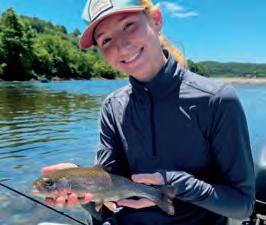
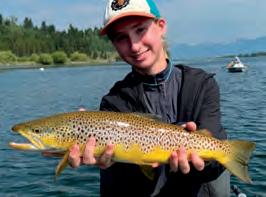
did a lot of wildlife and bird watching, sight-seeing, boating and hiking. As you can see Gracie took advantage of the fly-fishing opportunities in AR, MT, ID,


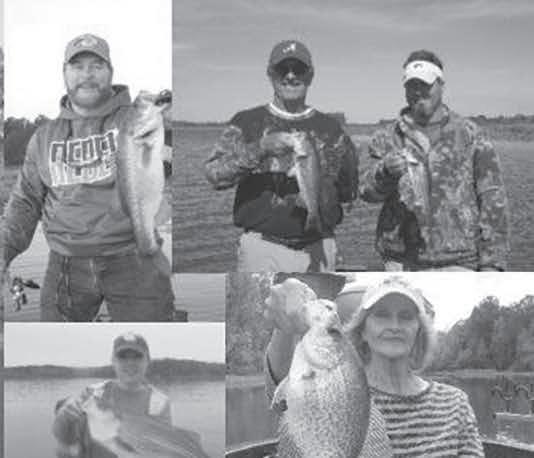
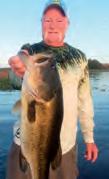





By Capt. Cefus McRae | Nuts & Bolts Fishing Series Hartwell, GA
It’s been a hot summer and we’re all ready for a break from the heat. Fall is right around the corner, bringing cooler water temps, friskier fish and more comfortable conditions for us anglers as well.


September and October bring environmental changes to the underwater world. The thermocline will begin to dissipate while the lakes go through the fall turnover. Then we will start to see fish in virtually all water depths as the stratified layers blend together. And now is the time you can really take advantage of just about everything in your tackle box, from bottom crawling football jigs to topwater plugs.
For most lakes in the southeast, that magic begins to happen when the surface temperature drops to the mid-70’s. Some of our lakes saw surface temps well above 90 this summer, but you’ll be surprised how quickly it can drop. A few cool nights, some rain, and a few cloudy days can have a significant impact.
The fall turnover is heralded by a couple distinct sensory signs. The water will take on a bit of a cloudy color and most of the time you can smell it too. That’s the decaying
debris on the bottom mixing up with the upper water column. And it can slow the bite for a few days. But when this is over, get ready. To some degree it’s a mirror of the prespawn bite in the early spring. Fish can be anywhere, from the backs of skinny creeks to 90 feet. As usual, the key is finding bait. Turn up the gain on your Simrad just a little so you can see structure that is holding bait. And here’s a tip… the increased gain will now let you see broken up schools of bait. Tight balls of bait can simply be traveling from point A to point B. But broken up schools usually indicate something has been marauding them recently and there’s probably game fish around.
So, swap out those rusty hooks for some super-sharp Daiichi Bleeding Bait hooks, tie on new leader, and grease up your reels. Fall is on the way and it’s one of the best times of year to hear a screaming drag.
Tight lines and calm seas.
Do you feel it? The soft breezes that carry across the lake with a hint of coolness. Finally, fall is on the horizon. While September is still a warm month, some mornings can be refreshingly cool on the water. Towards the tail end of the month, we typically see our catches picking up. With the TVA pulling the water down, the hiding places for the ever-elusive Nottely largemouth also dwindle. This is one of the best times of year for a big fish on topwater. The remaining laydowns, bushes, and shallow docks hold promise for the heart thumping explosion on a buzzbait. When not scouting the shoreline cover for largemouth, the spotted bass are a fun pass time. These fish are more than willing to eat a slow worked fluke, 3-inch swimbait, or a ¼ Shakey head worked along the many tapering points on Nottely. The cooler water coupled with the water drawdown are recipes
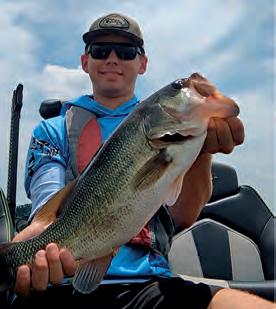
for a fun day! Keep an eye out on the calmer days, as schools of bass, striper, and hybrids will be busting bait out of the water. Chasing these fish down can be a rewarding experience! You’ll never know without packing the rods and Getting Fishing!
Lake Nottely: Lake Level: 5 ft below full. Temp: 78 degrees Clarity: Clear

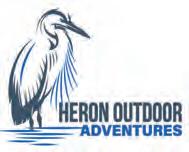


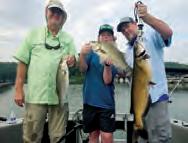




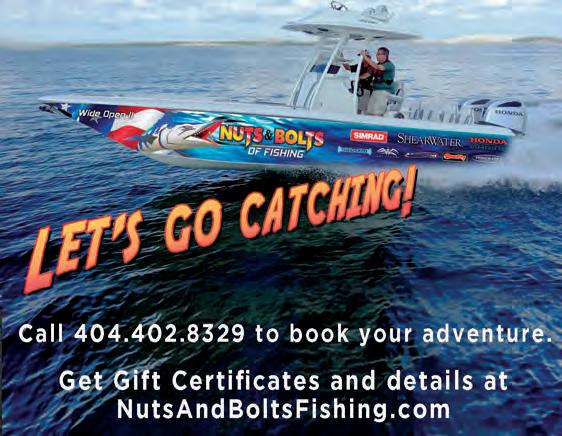
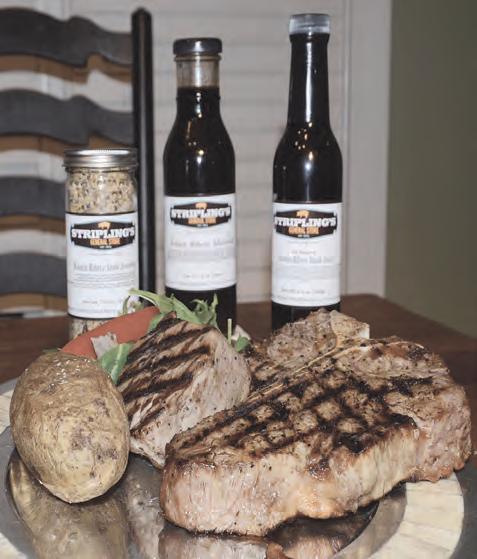








Forecast by: Capt. Clay Cunningham www.catchingnotfishing.com | 770-630-2673
Striper fishing on Lake Lanier has been solid the whole month of August. September looks to be much the same. Two patterns have been dominant. The downline bite has been solid and the trolling bite with leadcore has been solid. These same two patterns will continue into September with maybe a little more leadcore.
If the weather stays hot, look for the stripers to stay deep on the south end of the lake feeding on herring. With the right electronics like the Humminbird Solix Series you can see the fish feeding through the schools of bait and biting your herring on the hook. To catch these fish deep you need a Carolina type rig using a Capt. Mack Swivel Sinker, a sixfoot piece of Trilene 100% Flourocarbon leader material and a 1/0 Gamakatsu Octopus hook. Hook the herring right up between the nostrils. and drop them right above the schools of stripers on your electronics.
If you do not want to use live bait, leadcore is also still catching some big fish. We are seeing more big fish this Summer than the previous five years. Leadcore is a weighted line you pull



behind the boat. It is color coded to help you dictate your depth. On the end of the lead core line, tie a thirty-to-fifty-foot piece of 20-pound Trilene 100% flourocarbon tipped with a Berkley Fusion White bucktail, or a Capt. Mack white chipmunk jig. You need a wide selection of these bucktails from 1 to 2 oz. Some days they will key in on a particular jig or color. Tip the bucktail with a 4” chartreuse Capt. Mack Shad Body as a starting point. Every bait store around the lake has these bucktails and Shad bodies. Be sure to purchase several colors of the shad bodies as well. Some days a certain color will outperform other colors due to numerous factors like cloud cover. The Capt. Mack Shad bodies are fairly cheap so purchase several colors to be prepared for changing weather conditions. Lastly, in late September the weather will begin to cool off. Be sure to have several topwater rods loaded with topwater baits and swimbaits for any early topwater action. Baits like a Berkley Canewalker and the Berkley Magic Swimmer are essential. These fish will school on the surface in October. Be ready for the fun.
Forecast By: Captain Paul Tyre Tyrelakeseminolefishingadventures@gmail.com
The big bass have been biting this summer on Lake Seminole and we expect it to continue into the fall! Currently, the bass have been biting topwater lures in the mornings and afternoons. Walking baits, like 6th Sense Catwalk and Buzzbaits continue to generate some explosive strikes on the grass lines on the main lake. Plastic worms like a 6th Sense Boosa 9.6-inch Ribbon Tail fished along the grass lines have been very productive after the topwater bite slows.
The topwater bite should continue in September and get even better as the bass start the fall feed. If coming to Lake Seminole in September make sure to bring swimbaits, crank baits and jerk baits. They can be very productive especially if the shad are
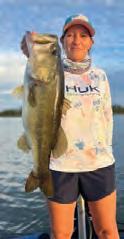
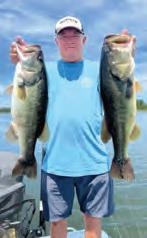
running. The hollow belly frog is a must in the Fall on Lake Seminole! For an exciting Lake Seminole Fishing Adventure, email us @ paultyrefishing@yahoo.com or follow us on Instagram @capt. paultyrefishing and Facebook @ capt.paultyrefishing! Give us a call at 850-264-7534 to check availability!
Largemouth and Spots: FAIR - September is usually a tough month for bass fishing on most lakes and West Point is no exception. Another tremendous hatch of baitfish this year and the bass can be difficult to catch with so many easy targets available. There are a few patterns that can still produce. Try pitching jigs or Texas rigged worms around blow-down trees or under boat docks. This pattern seems to work best when the sun is out. The fish like the shade and coverage just like we do. Old roadbeds and pond dams, especially those with cover or man-made brushpiles can produce some good fish. Try using drop shot rigs or a shaky head rigged with a Zoom Trick worm. Some decent fish can still be caught above the 219 bridge in the Chattahoochee by fishing the grass beds, especially if the lake remains near full pool. Try a frog style bait or a jig around thick cover or aquatic grasses. By the way, supposedly the Corps of Engineers is going to pull the water down for repairs to the dam this fall and winter, so expect the water to come down 10 feet or so by late September. This could improve the bite during periods of water generation.
Hybrids and Stripers and Whites:
GOOD - I am expecting a really good topwater bite this September because of all the newly hatched shad. Have a popping cork or 3/8 oz Rooster tail ready and watch for schools of fish on the surface. The best areas seem to be near the river where a major creek flows in. If we have a tropical depression come through, they usually go nuts on top! Trolling big plugs with a bucktail in front, especially in the late afternoons during periods of water generation, can be very effective as well.
Catfish: GOOD - Although they’re kind of overlooked catfish provide a steady bite all summer. Try using live worms, cut bait or chicken liver fished on bottom. Jug fishing is also productive and a fun way to get the whole family involved. Some big blue and flathead cats can be caught by fishing big baits in most of the deeper holes from the 219 bridge up to around Glover’s creek. Don’t expect a lot of bites but be ready for battle when you do get one! Lake is currently still near full pool , but we are expecting a 5 feet drawdown starting by September 1. Mostly clear with s urface temps in the upper 80’s or even warmer in places!



September is a month of transition and can be hit or miss. The good news is, as we head into late September, water temperatures will start going back down.
Right now, and through September, fishing a spoon vertically right under the boat is a great tactic. Look for humps in water that is from 35 to 50 feet deep. If the fish are suspended, say at 18 feet, you might want to use a 1/2-ounce War Eagle spoon. White with red on the tip is my go-to color pattern. I also like the “citrus shad” color that has some chartreuse in it.
Most of the time I use a 7/8-ounce spoon. Just drop the spoon to the bottom. Then lift the rod tip up and let it flutter back down. This bite will just keep getting better through the fall and winter.
Bring a stick like a pool cue with a rubber cover on the bottom. When you find the fish on the hump, just tap the bottom of the boat and it will draw fish in,
Crappie – in late September, the fish will begin to move off the structure they have been hanging tightly on all summer. I still like to troll for crappie and

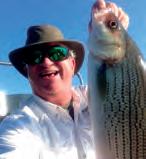
will certainly be doing so in late September.
Fly Fishing – I gave some casting lessons this week to a couple of gentlemen wanting to improve their double haul cast before targeting bonefish in the Grand Bahamas. While we do not have the explosive bonefish, we do have hybrid bass and when the birds come in, you can catch them on a fly on long points. Just follow the birds.
Final Words
Contact me at wmoore1700@outlook.com or call 404-317-9556 to book your trip. I provide everything you need including light snacks and soft drinks.
Now is also a good time to hone your fly-fishing casting skills. I give lessons and can show you techniques to help you target hybrid, striped, and even largemouth bass.
Tight Lines, and God Bless.
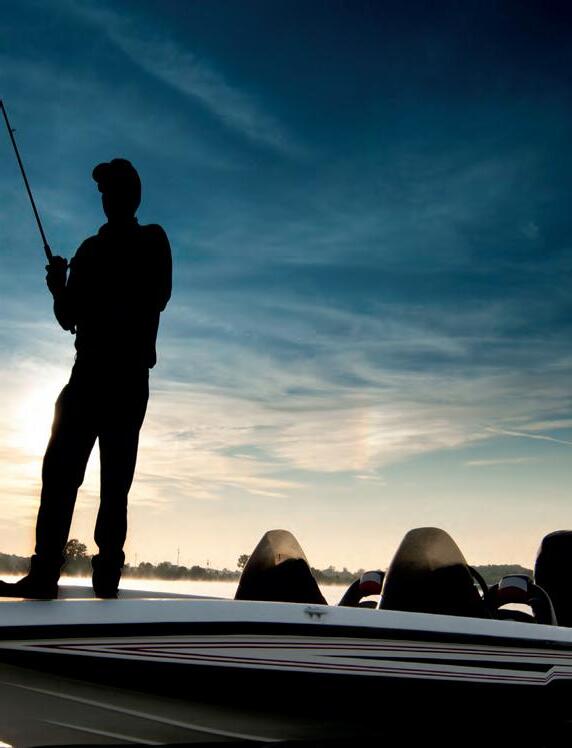
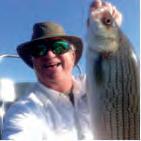

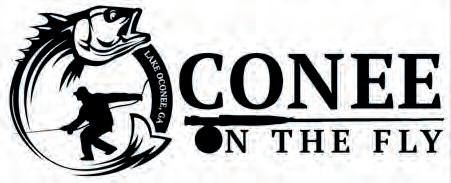

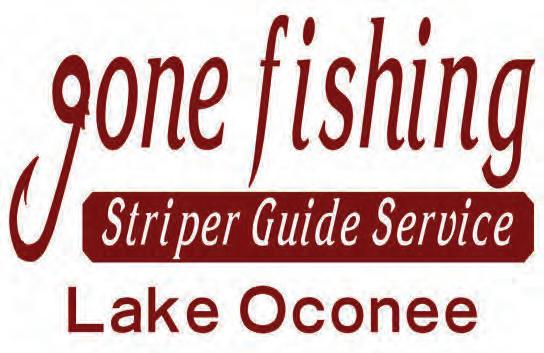


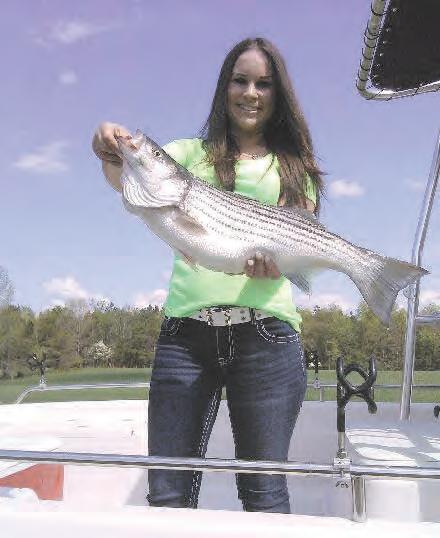


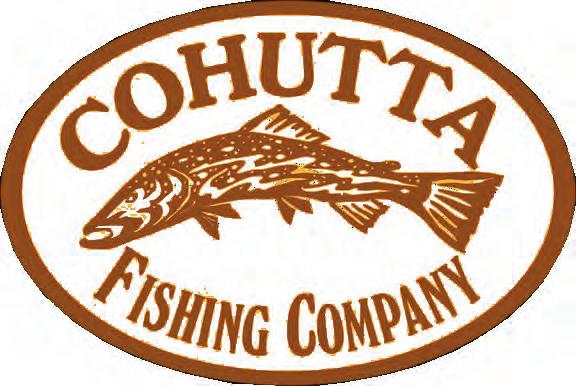

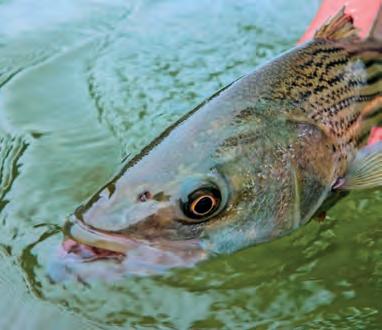








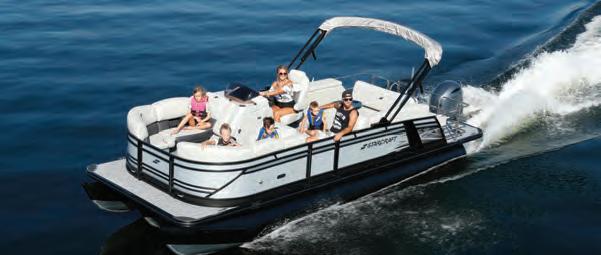



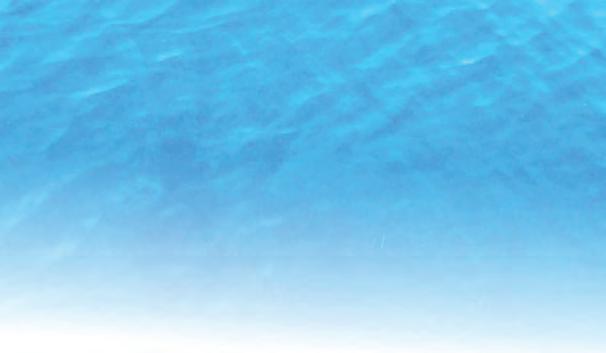











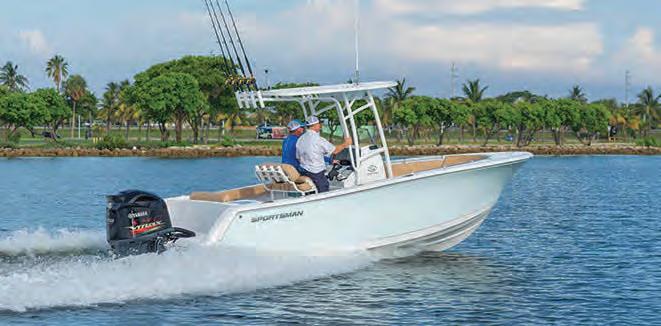






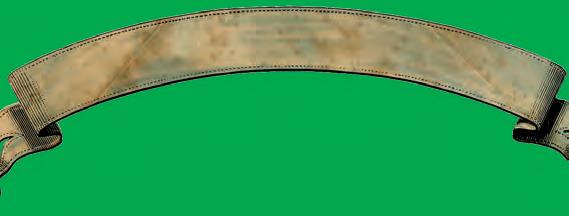










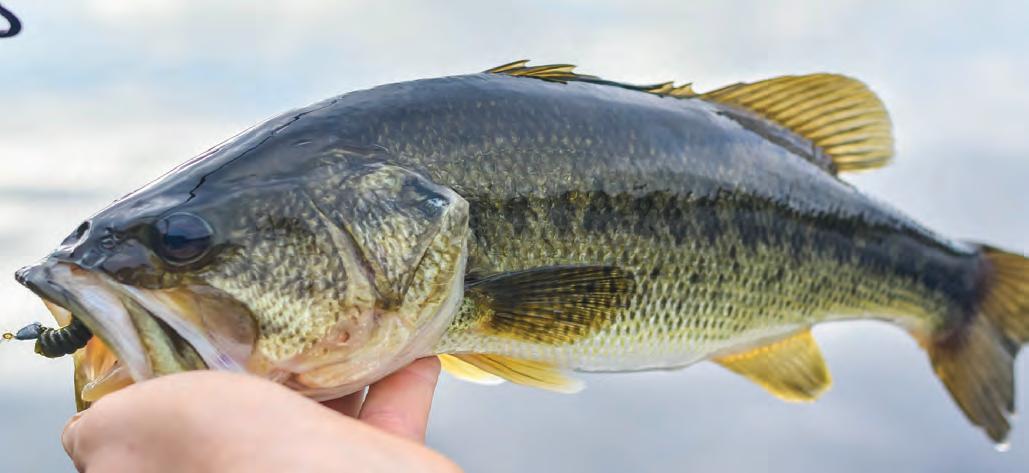




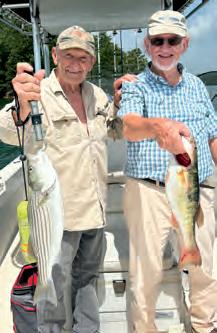

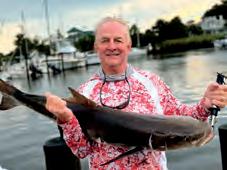
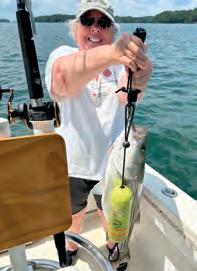
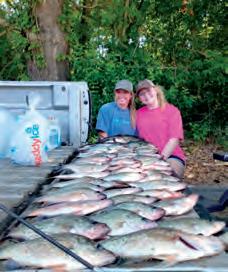





































The most popular soft drink on the planet just made a refreshing splash with these gleaming bars and rounds struck in highly pure 99.9% fine silver, each with an exquisite reverse proof finish! Each one-ounce fine silver bar features an engraving of the famous curved bottle and the popular slogan from the 1970s, “I’D LIKE TO BUY THE WORLD A COKE®”, in big, bold lettering down the side. Each silver round struck in one ounce of fine silver features three Coca-Cola bottles. These tasty treats are officially licensed by Coca-Cola® so you know “It’s the Real Thing!”
Order More and SAVE!
Purchase $99 or more, you’ll receive FREE SHIPPING to your doorstep. When you purchase 10 or more bars or rounds, you’ll also receive a FREE six-gram silver Coca-Cola Bottle Cap Coin, colorized with a reverse proof finish—a $29.95 value!









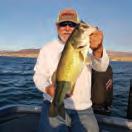
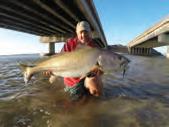
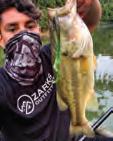
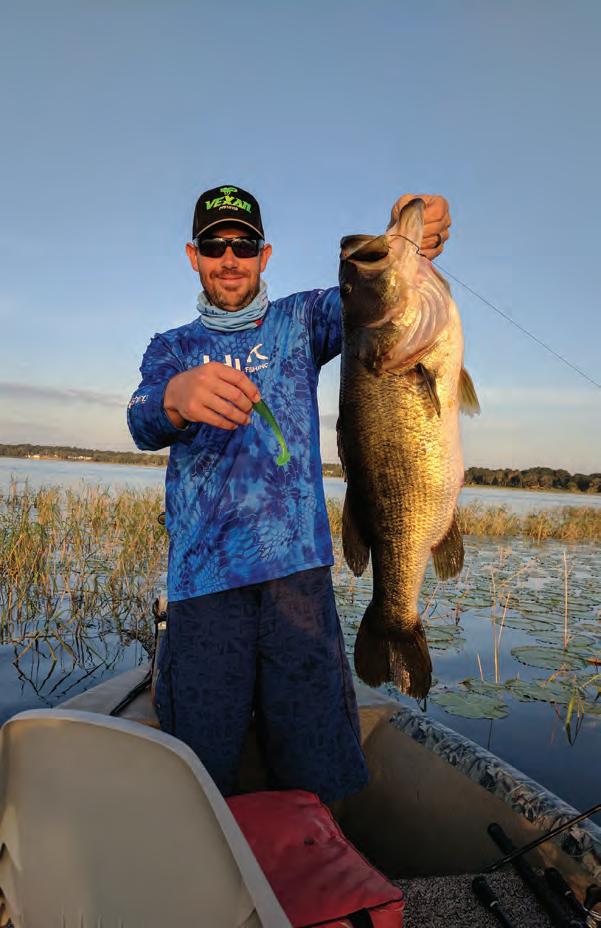
THE ORIGINAL SCENTED LURE
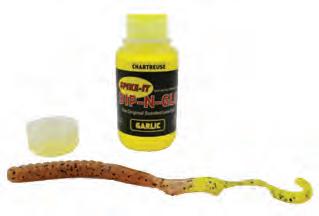


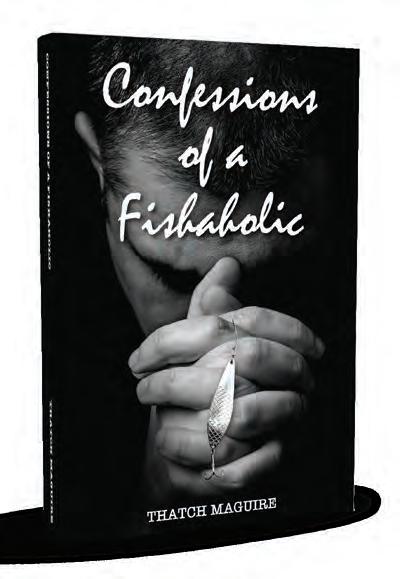
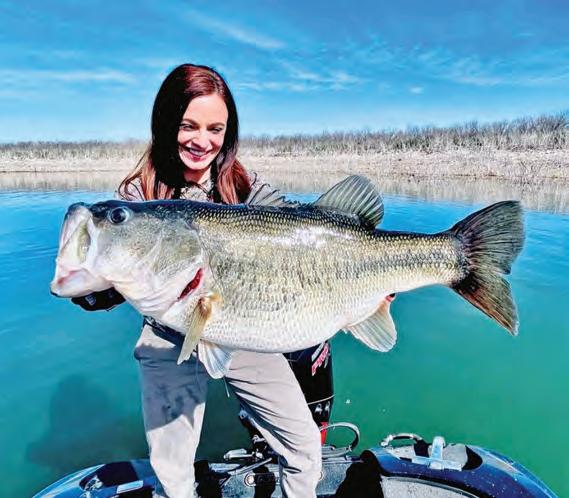
By Tracy Patterson

Maguire’s frst work is a compelling, fast read. His style is like a mix of Hemingway with a sardonic blend of Hunter S. Thompson. I couldn’t put it down...
Ben Martin Editor in Chief Coastal Angler Magazine “ ”

Confessions of a Fishaholic, by Thatch Maguire, is a hilarious and irreverent look at one man’s quest to catch fish in spite of life’s annoying interferences. You’ll travel with this awkward adventurer as he risks home and health to pursue his passion for fishing...regardless of the consequences. Anglers of all expertise levels will immediately identify with why his addiction is incurable. This book defines the blurred line between passion and obsession.
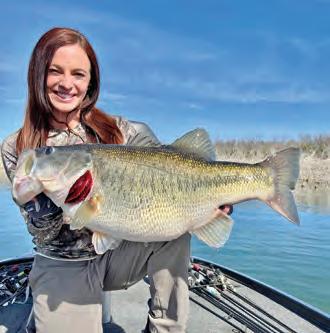
Tournament angler Lee Ann Powell recently set a new IGFA world record with a 10 lb. 3 oz. bass caught on 10 lb. test. She was fshing (for fun) with her friend and charter captain Dalton Smith on O.H. Ivie Lake in Texas when they noticed a school of fsh on their livescope. Powell was using a Damiki jig with a 3 inch Fluke dipped in Spike It Chartreuse Cajun Dip N Glo. According Powell, “Once the big bass took the lure the exhausting fght to bring the monster bass to within netting distance required me to constantly adjust and reset the drag with my record catch going deep each time it neared the boat.”
Afer fnally netting it, Powell says they put the fsh in the live well and headed out to fnd a set of certifed scales to weigh it. Te requirements for registering a potential world’s record fsh are stringent and Powell says she almost missed her window/timeline for submitting her catch for authentication by the IGFA.
About the IGFA: Te International Gamefsh Association is a non-pro organization committed to the conservation of gamefsh and the promotion of ethical angling practices through science, education, record keeping and recognition of outstanding accomplishments in the feld of angling.
We salute the IGFA’s decision in January 2014 to create a separate category for female anglers, opening up thousands of categories for new World’s Record opportunities.

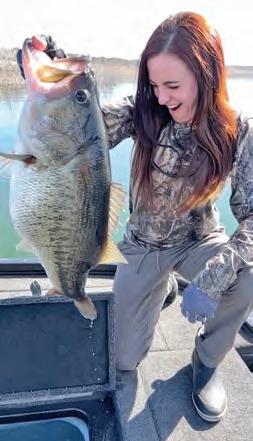





When it comes to spooling up your reels, the options are endless. For some this can be a bit overwhelming. Hopefully in this article I can help you understand what diferent kinds of lines are used for and what line strength is the best choice for you.
Te three main types of lines are monoflament, fuorocarbon and braided lines. Each has its pros and cons in diferent situations. Monoflament line foats, fuorocarbon sinks and most braided lines also foat.
I rarely use monoflament for bass fshing, but it does have its perks for a scenario or two. When throwing big heavy glide baits, I ofen spool my reels with a very strong 25- to 30-lb. monoflament, as it is very strong and much less prone to breaking on the cast when I am casting a large bait. I also ofen use mono for is a short leader when throwing a topwater bait with treble hooks. I attach about a foot of mono leader to the end of my braid, and it is less visible while also foating to keep a topwater working naturally.
Something to note about monoflament is it’s very stretchy, making it hard to drive the hook of many diferent lures into the mouth of a fsh, especially if you’re using straight mono and have a lot of line out. Te more mono you have out equals more stretch.
I use a lot of fuorocarbon in my arsenal
TYLER WOOLCOTT

of bass-fshing set ups. Tis line has virtually no stretch, it is more abrasion resistant than most other lines, and it is also a clearer line than anything else, making it harder for fsh to see. Unless I am fshing around extremely heavy cover, where braided line is needed to pull the fsh out, pretty much every reel

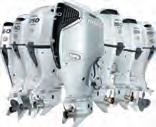

I use has fuorocarbon on it. I use anywhere from 10- to 20-lb. fuoro, depending on water clarity, types of cover, and the type of lure I am fshing. Braid also serves me well in many diferent applications. Having virtually no stretch, being very strong and extremely thin compared to other lines of the same strength, and outcasting every other line made are just a few perks of braid. Te downside of braid is it’s basically tiny thin rope, meaning if you are around clear water fsh can probably see it attached to your lure. In some cases, you will need a leader attached to the end of your braid.
Every single spinning reel I own is spooled with braid, which helps them cast better and operate much smoother than if they were spooled with the other kinds of lines. Typically, I’ll use 10lb. braid and attach a few feet of a fuorocarbon leader in a size of my choice to the end to keep it stealthy. I have 30- to 50-lb. braid on all my topwater treble hook baitcaster rods to make extremely long casts. When fshing around heavy grass and vegetation, I also use braid, typically in 50- to 65-lb. test. Tis strong line allows you to get the fsh out of the mess and into the boat. With your lure being in the grass, you can get away with using a thick braid, as the fsh won’t see your line around the vegetation.
Hopefully this helps you understand the diferent lines better and helps you put a few more fsh in the boat.
Tyler Woolcott is a professional tournament angler and guide. Check out his website at www.tylerwoolcottfshing.com.
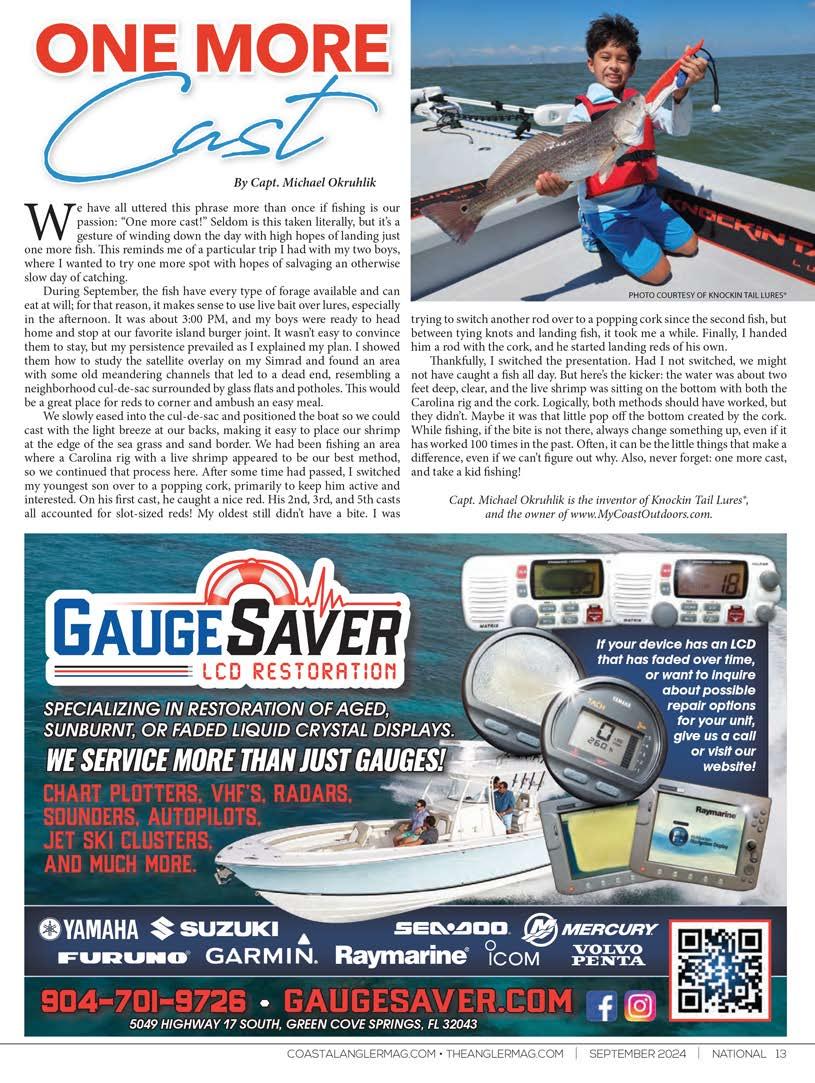
September’s fshery in the Florida Keys can be unpredictable as we transition into autumn at the end of the month. Cooler northern waters will begin to push fsh back into their southern migration, while we maintain our usual summer species.
It’s always a sweeter deal running ofshore when the mahi are still around, giving more opportunities to diversify the fsh box. Tey will begin to phase out throughout the next several weeks, making this month the last month of the year to reliably target them.
Swordfsh and blackfn tuna are also excellent fuel-burn justifcations this month. With fewer boats on the water, the trafc at the Marathon humps will be less chaotic for targeting tuna.
Te reef fshing is always a good option. Te snappers are snapping year-round and seasonal harvest for black and red grouper are still open.
Tis is a great opportunity to dive for lobster as well, as the water will still be warm, but the excitement over opening season has died down. Te beginning of lobster season can turn our waters into an absolute zoo. It’s unnerving to even

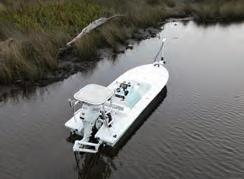

By Capt. Quinlyn Haddon
suggest going out during that time and throwing yourself in the mix of that mayhem. Tat hype seems to gravitate mostly towards the mini season in July and the few weeks in August.
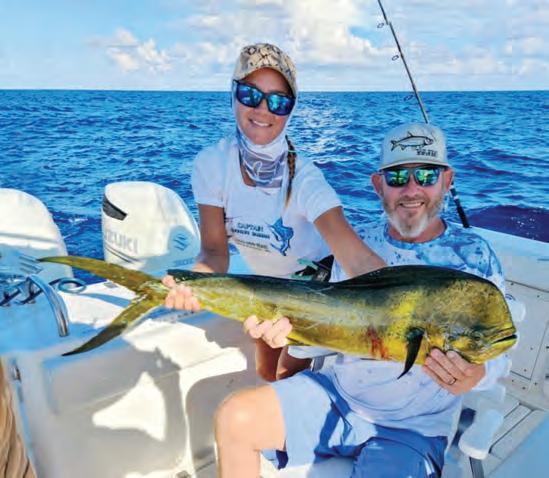
Each year when the kids are back in school, the Florida Keys takes a massive hit on tourism. We will experience the slowest time of the year over the next few months.
Although this may be a difcult time for working locals, it’s something to be enjoyed by our visitors. Te prices of accommodations will be as low as they get, restaurants will have ample seating, service will be quick, and best of all, no trafc!
Te furry of summer boaters trailering their rigs down from all over the country will have stopped, making both road and water trafc much more pleasant. Te fshery will experience less pressure, creating a mecca of hungry fsh, for those who are able to get out there.
Being in the middle of hurricane season likely
However, it’s a great time to make an impromptu trip, knowing you won’t have a problem fnding cheaper accommodations and availability for fshing charters.
Hurricane season may seem daunting, but there is more than enough notice ahead of any major storm. Locals are always diligently watching the weather for the frst sign of any potential disturbance and will be able to help you make decisions when booking last minute trips.
While September maybe be our slow season for tourism, that does not apply to our fshery. Come take advantage of having paradise all to yourself.
Capt. Quinlyn Haddon guides with Sweet E’Nuf Charters based out of Marathon, Florida Keys. www.captainquinlyn.com; IG: @captainquinlyn

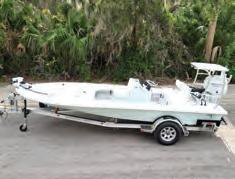


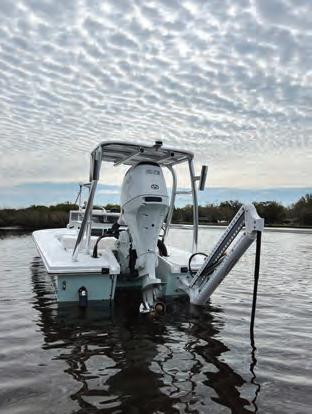

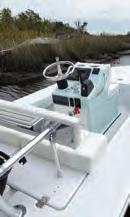


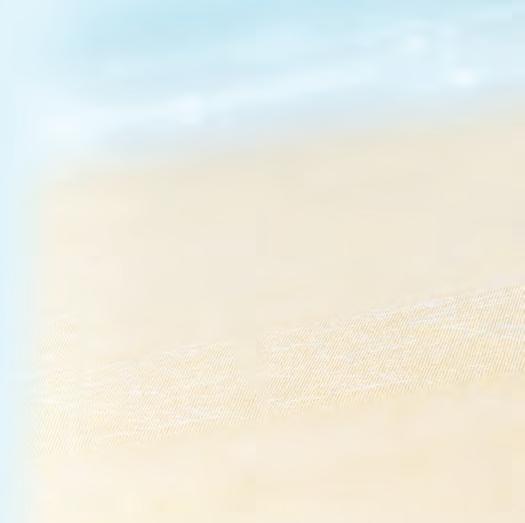




Amemorable
beach moment: You’re basking in the warm sun, toes in the sand, letting the gentle turn of the foam-capped waves lull you into a state of complete relaxation. As your eyes scan the endless horizon of blue on blue, you’re rewarded with a school of dolphins making their way across the sea.
There’s no denying their signature shape as they leap from the water. If you don’t see anything else extraordinary the rest of day, you can take solace knowing you’ve witnessed one of nature’s most playful and human-like creatures in their natural habitat.

Why not re-create that special moment with our Balinese Dolphin Pendant? We’ve captured two dolphins mid-jump in sterling silver crafted in the Balinese style. Tucked between these beloved sea mammals is a full carat of shimmering blue topaz. Made by some of Indonesia’s finest artisans, this pendant is an absolute steal at JUST $29! That’s what we call our Stauer IMPOSSIBLE PRICE!
Nothing captures the shimmering color of the ocean in the midday sun like blue topaz. With its sparkling, clear blue color and high reflective index, blue topaz is one of the world’s top-selling gemstones. The Gemological Institute of America lauds topaz for its hardness, noting that blue topaz is known for its intense color that’s better than aquamarine. With this special price, you can score quite the catch.

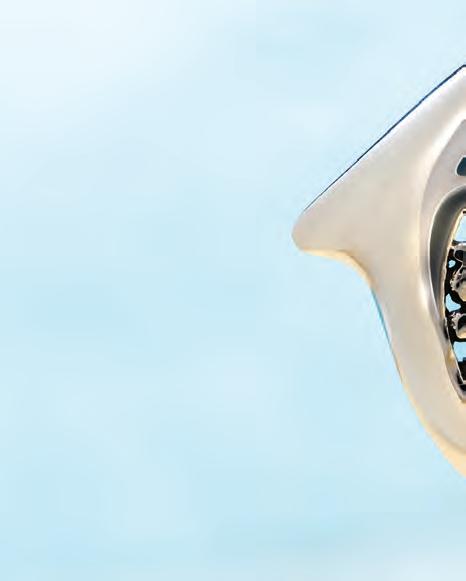
Satisfaction guaranteed or your money back. Enjoy the Balinese Dolphin Pendant for 30 days. If it doesn’t pass the test swimmingly, send it back for a full refund of the item price.
Limited reserves. This pendant is already one of our best sellers this year. A full carat of genuine blue topaz set in .925 sterling silver for this price is as rare as a dolphin sighting. We cannot guarantee availability for long. Call today! This offer is limited to the first 1,900 responders to this ad!
Jewelry Specifications:
• Made in Indonesia
• Blue topaz and .925 sterling silver
Balinese Dolphin Pendant (1 carat)

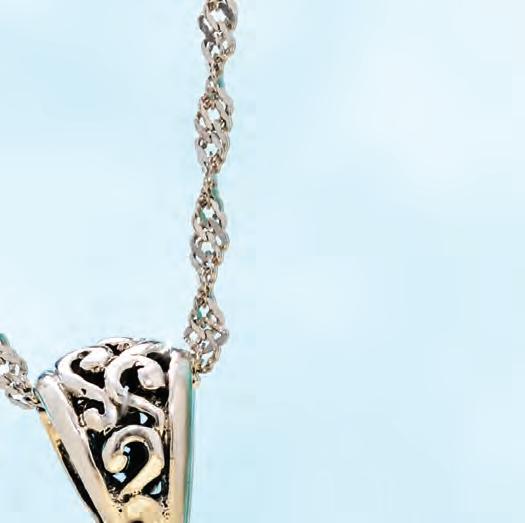
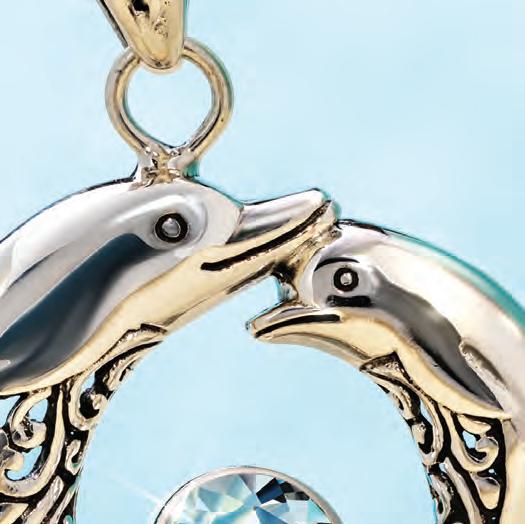
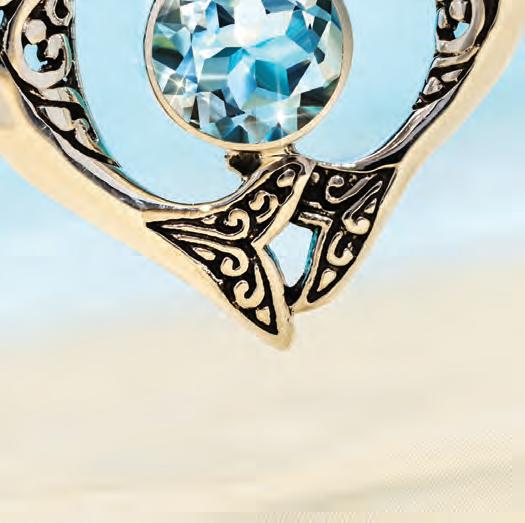
$299 $29* Save $270
*Special price only for customers using the offer code.


Chain sold separately.
One carat of shimmering blue topaz set in sterling silver for ONLY $29

What Stauer Clients Are Saying About Our Topaz
“Just lovely! Would recommend it as a purchase. Thank you STAUER.” — Mary L.




An angler trolling for striped bass hauled in a 127-pound, 6-ounce Arkansas state record paddlefsh on June 15. Te monster fsh came from Beaver Lake in northwest Arkansas, and it crushed the existing record of 118 pounds.
Mike Schleeper inked his name in the record books while trolling brooder minnows, which are large shiners, about 30 feet deep near a point on the 28,000-acre lake. His friend and fshing buddy Tom Mayberry was there to help during the 45-minute fght.
“I’ve been fshing for stripers up here for about 13 years, and I’ve had the chance to catch some stripers over 30 pounds, but this was diferent,” Schleeper said. “It didn’t strip line and stop in surges like big stripers do, he just sort of pulled the rod down and kept going. I couldn’t turn him, so we had to follow him with the trolling motor for about the frst 20 minutes.”
Once Schleeper did manage to sway the fsh in his direction, the fght continued for nearly another half-hour.
“It was a 45-minute fght altogether,” Schleeper said. “I’d thought maybe it was a really big striper, but then we could fnally see it a little bit. It looked like a giant catfsh at frst, but as we got it closer to the boat we realized what it was.”
Te giant paddlefsh had been hooked in one of its pectoral fns incidentally while the anglers were trolling. Snagged fsh ofen don’t count toward state records in many states, but paddlefsh are accepted because these fsh do not bite lures—they eat plankton—and catches on rod-and-reel are almost exclusively the result of snags.
When Schleeper and Mayberry fnally got the fsh to the side of the boat, they ran into a snag of their own.
“Our net wasn’t big enough for the fsh,” Schleeper said. “Tom wrestled with that fsh for a while trying to fgure out a way to get it in the boat. At one point I told him to just cut the line because it wasn’t worth it. Tom was adamant that we needed to get that fsh in and report it.”
Schleeper agreed with Mayberry and they fnally worked a rope through the fsh’s mouth to hoist it aboard.
“As soon as the fsh fell to the bottom of the boat, the hook popped free,”



Schleeper said. “We got really lucky.”
Paddlefsh are the oldest surviving animal species in North America according to fossil records. In fact, paddlefsh predate some dinosaurs (300 million years). Females may spawn only once every 4 to 7 years.
A recent regulation passed by the AGFC allows a limited, permit-based snagging season for paddlefsh in the White River portion of Beaver Lake from the Twin Bridges Access to the Lake Sequoyah Dam April 15-June 15.
Te world-record paddlefsh weighed 164 pounds, 13 ounces. It was caught by Chad Williams at Missouri’s Lake of the Ozarks in March.
For more giant fsh, go to coastalanglermag.com.

